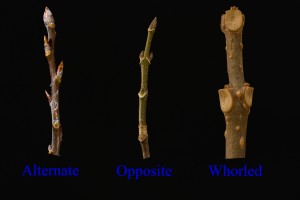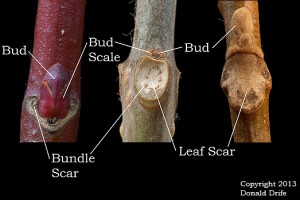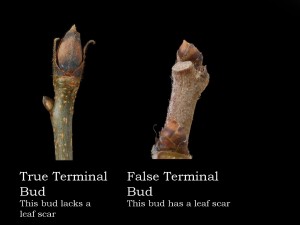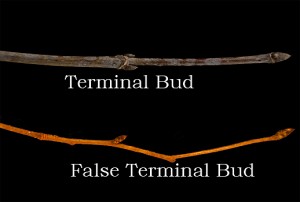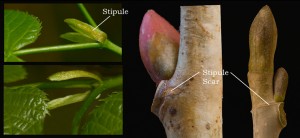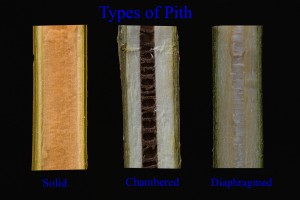It is easy to learn to recognize most trees in the winter. Some species are even easier to identify. Once you know some basic terms you can start to learn the names of the common trees.
The arrangement of the buds is the first thing I look at. Buds are either alternate, meaning grouped singly along the stem, opposite, meaning in pairs, or whorled, meaning three or more.
Leaf scars form where the leaves were attached. The marks within the leaf scars are bundle scars formed by the vascular bundle attachment points. Vascular bundles are the “arteries” of plants. The best example is the strings in a celery stalk. The shingle-like coverings of a bud are the bud scales.
A true terminal bud has no leaf scar. This is where the twig starts growing in the spring. Twigs with true terminal buds are straight. Twigs with false terminal buds are zigzagged. On twigs with false terminal buds, the end leaf bud is where the twig starts growing in the spring.
Stipules are leaf-like bracts that form at the base of the petiole (leaf stalk). The mark left when they fall off is a stipule scar.
Pith is the soft center of a twig. It is solid, chambered, or diaphragmed.
Future posts will explain how to identify specific groups of tree species.

